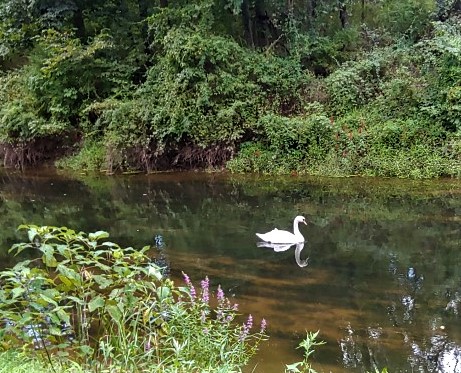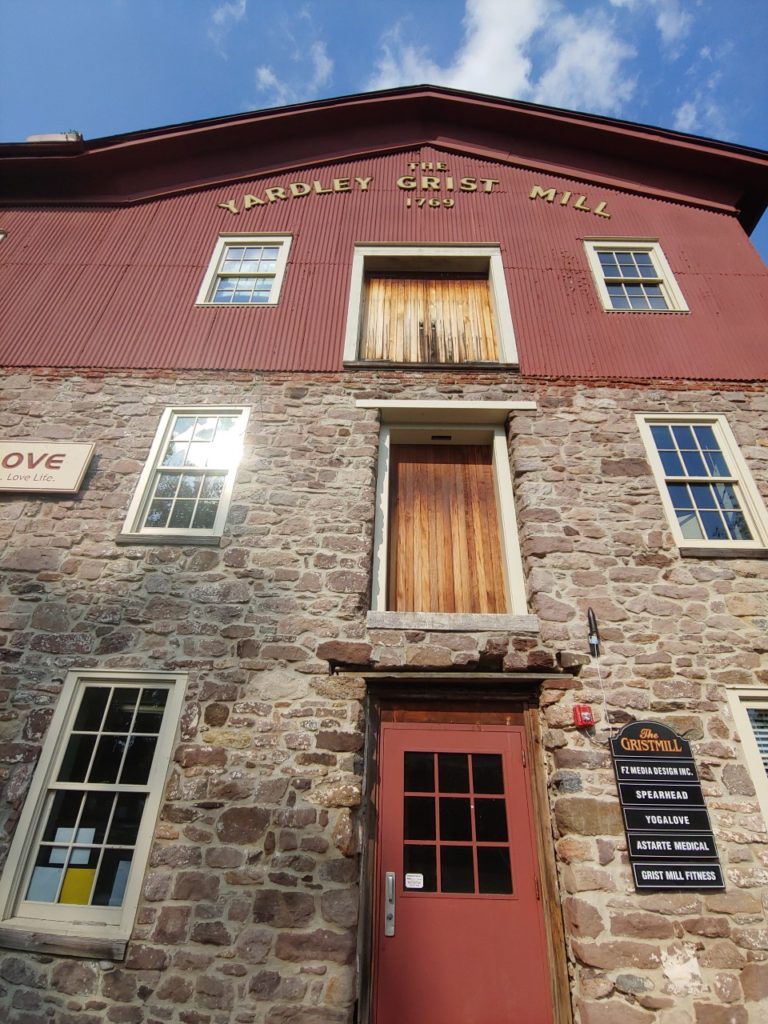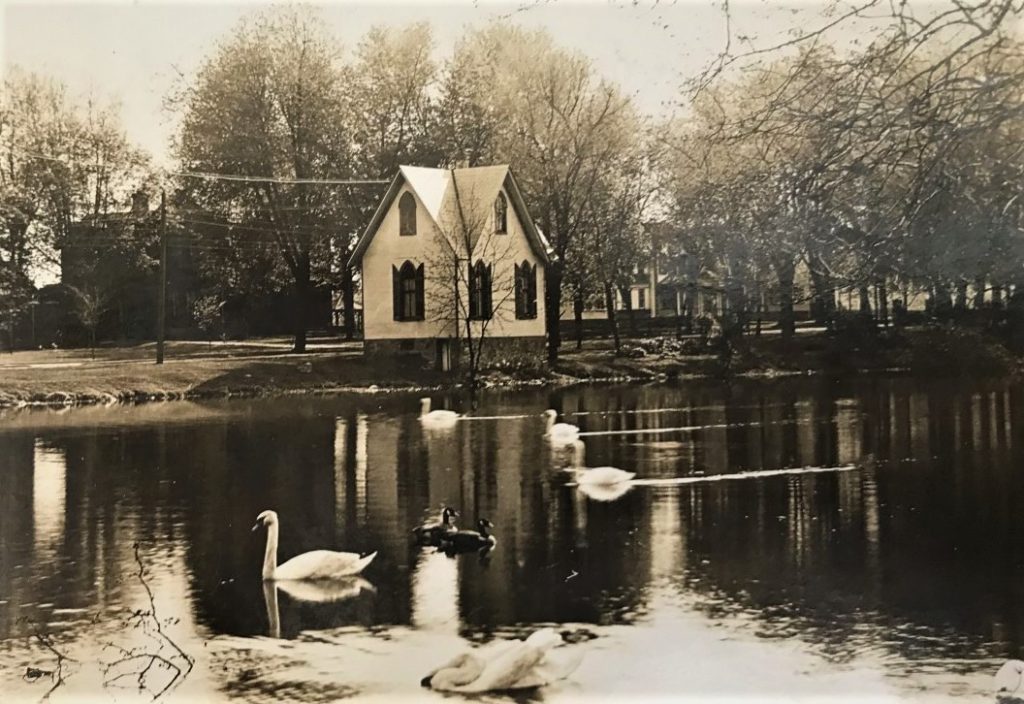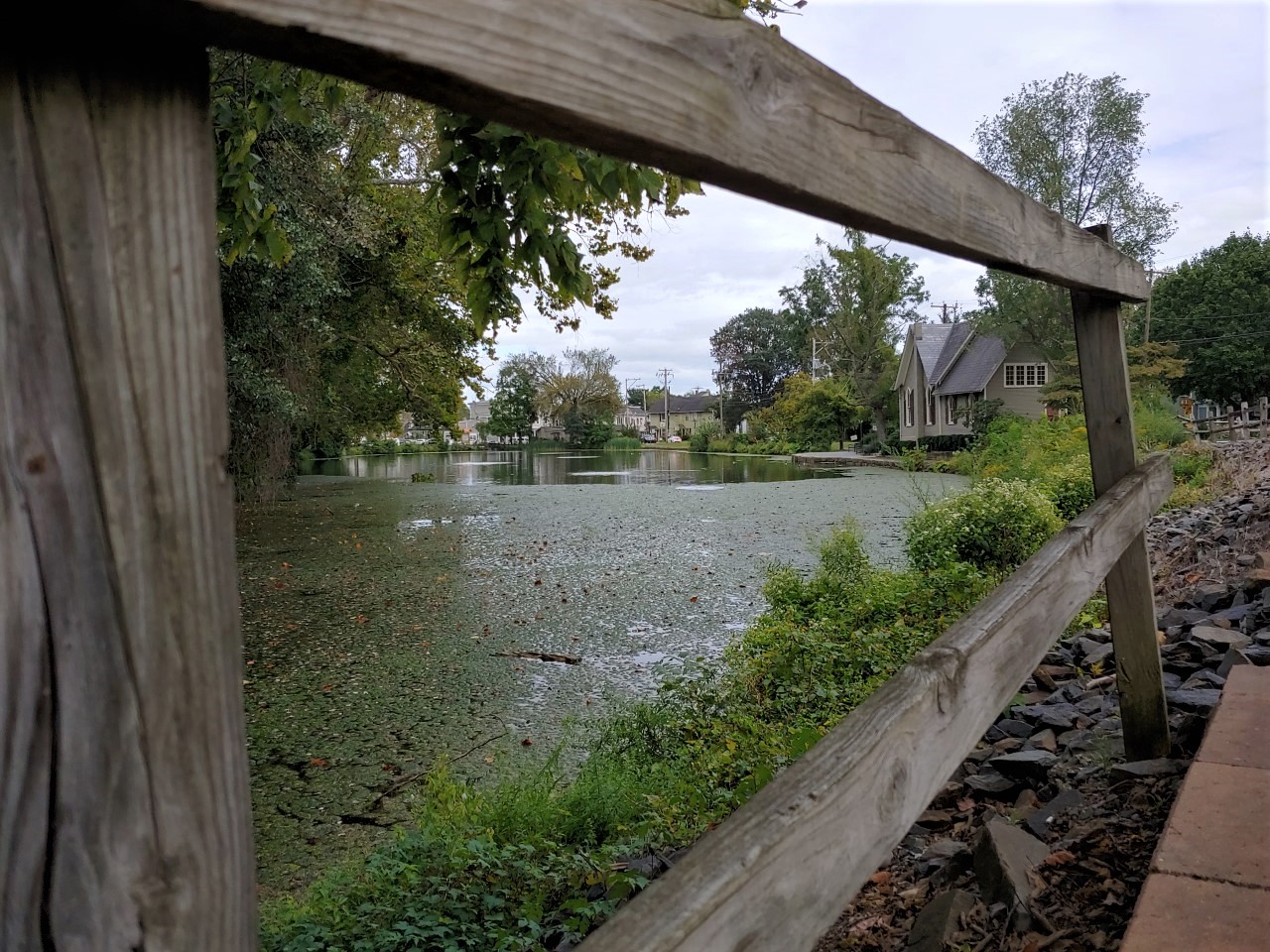How Yardley’s signature lake came into existence and got its name.
On my bike rides north from Yardley on the Delaware Canal towpath, I often encounter a white swan gliding effortlessly on the waterway. That graceful water bird ought to take up residence on the borough’s Lake Afton. A perfect fit.

Mary Anne and I early in our marriage were residents of Yardley about two blocks from the lake in the center of town. Skaters in hats and scarves charmed us while swirling about on the ice like a living Currier & Ives portrait. The rest of the year, ducks and geese lorded over by “Gus the Goose” owned the lake. It was tradition for borough motorists to brake for the descendants of the former Yardley duck farm of the 1920s. They took their time crossing lakeside Afton Avenue, often changing their minds midway. Shaking his tail feathers, Gus would honk a challenge to idling car engines. For us, it wasn’t unusual to be late for work. Try explaining that to your employer more than once. But hey, the kingly fowl ruled Yardley and sweet Lake Afton.
With these memories fresh in mind, I decided to seek out the history of the lake. English immigrant John Brock was among the first to arrive on the site to take possession of land embracing around Delaware River. Brock realized the creek could power a grist mill to grind crops for area farmers. So he created a pond to turn the water wheel of his new mill.
In time, the Brock property included additional buildings and barns around the pond. Roots for a settlement were in place. Neighbor William Yardley, who had come over on the same boat with John, prospered on a large adjacent land grant from William Penn that he farmed. Yardley and his entire family, however, perished in a small pox epidemic. Nephew Thomas Yardley arrived from England in 1704 to take charge of the plantation.

Tom was a farmer. He also was an industrial engineer with a workforce of possibly a dozen slaves. He viewed his uncle’s estate as a great opportunity. He acquired the Brock mill, then constructed a system of dams, a smaller interlinked pond closer to the mill and feeder canals. Together, they drove expanded operations in his grist and sawmill plus other startups, bringing greater prosperity. Tom also founded a lucrative ferry business on the lower edge of the settlement. It became an important commercial link for travelers and growers on both sides of the Delaware. For Tom Yardley it was “Cha Ching!” at the cash register.
With his riches, Tom built a 2-story mansion called “Lakeside” overlooking the ponds and separated from his mill by Brock Creek. At Tom’s death in 1756, Tom Jr. inherited the mill, ferry business and Lakeside mansion. A developer in subsequent years constructed homes and streets on speculation near the mill ponds, enlarging the settlement of “Yardleyville”.
When the Delaware Canal opened through town in 1832, water from the canal and the mill ponds powered the mill, rebuilt as a stone 3-story structure following a fire. The two ponds and the grist mill graced the village as the town blossomed in its Victorian Romanticism period of the mid-19th century evidenced by elegant homes along Afton and Main streets. A small Victorian Gothic library with lancet windows went up in 1878 on the edge of the largest pond. “The design for the Old Library was inspired by an illustration in a book of poetry,” according to Susan Taylor of the Yardley Historical Association. Susan and others theorize the book contained a famous love poem by Robert Burns of Scotland composed in 1791. “Sweet Afton” begins:
“Flow gently, sweet Afton! amang thy green braes,
“Flow gently, I’ll sing thee a song in thy praise;
“My Mary’s asleep by thy murmuring stream,
“Flow gently, sweet Afton, disturb not her dream.”
Local historians believe the dreamy landscape of the library, the pond, the brownstone St. Andrew’s Episcopalian Church at the headwaters and the borough’s row of Victorian homes inspired the Cadwallader family to name the lake after Burns’ poem. Susan notes the Cadwalladers once owned a large portion of Lake Afton.

Now about that white swan I pass on my towpath bike rides. She should be in the lake to perfect the graceful visage now that Gus the Goose is gone. A few swans would be nice. I’m channeling a century-old photo of a swan on Lake Afton and the owner of an inn built in 1832 where East Afton meets the Delaware. Today it’s the renowned Yardley Inn. But until 1958, it was – drum roll please – the White Swan.
Sources include “A Mill, Crossroads and a Lake” by Jeffrey Marshall published on Dec. 6, 2012 in Bucks County Magazine; and a history of Yardley as published in the Yardley News Centennial Edition, July 1995

